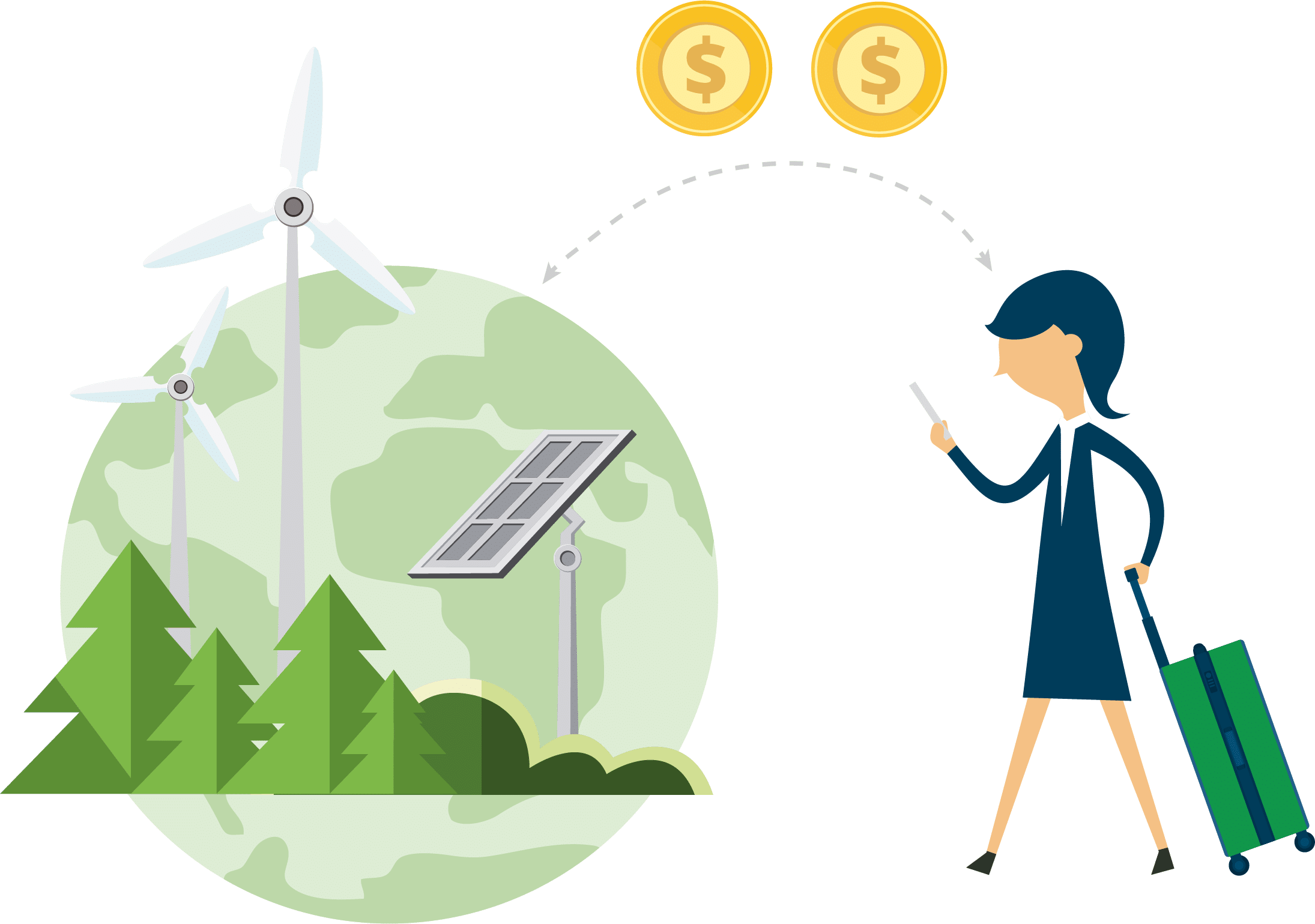What is offsetting?


The Good Traveler is a carbon offset program that works to restore the balance by keeping greenhouse gases out of the atmosphere. When you buy a carbon offset from The Good Traveler to go with your plane ticket, you are funding the work of people all over the country who are restoring the climate balance.
Some projects are growing living things that capture carbon and others are preventing the greenhouse gases from escaping in the first place, by doing things like producing clean wind energy instead of coal-fired energy, or capturing the methane from landfills. But all of our projects are certified by authorities like those that certify organic food, so you can be sure you are supporting good work.

To be more specific, a carbon offset is an official recognition of the reduction or removal of one metric ton of carbon dioxide equivalent. Many industrial, commercial, and agricultural activities produce carbon dioxide and other greenhouse gas emissions. When a project developer implements a project that reduces the amount of emissions stemming from an activity, or undertakes a project that removes CO2 from the atmosphere, these projects can generate carbon offsets by following an approved methodology from a recognized standards body.
For example, many landfills emit methane, a powerful greenhouse gas. This methane can be captured and sold to power generation companies to produce electricity, instead of being emitted into the atmosphere. However, in many places the price that the landfill operator could sell the methane for is not high enough to pay for the landfill gas capture. By selling carbon offsets as well, the landfill can implement the project. In this case, the greenhouse gas impact of methane is converted to the impact of carbon dioxide before it is sold as a carbon offset.
An offset (or carbon credit) is the reduction, removal or avoidance of emissions from a specified project that is used to compensate for emissions occurring elsewhere. Each offset represents one metric ton of CO2e. It is important to note that each offset must meet the following criteria:
- Real: Offsets must be accurately measured in accordance with scientifically based protocols.
- Additional: All offsets must pass a regulatory surplus test to ensure that they are not required by regulation or any other legal requirements; project activities cannot be business-as-usual as defined by the applicable registry and protocol.
- Verifiable: Offsets must be independently verified by an accredited third party and are subject to extensive data collection and review prior to credit generation.
- Enforceable: There must be undisputed ownership of the credits and no double counting of offsets.
- Permanent: There must be an established buffer account within the applicable registry to ensure that any net reversals are accounted for and compensated.
Please check out the FAQ page if you have any additional questions.
